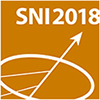Studies of the brain cytoarchitecture in mammals are routinely performed by histology, i.e. by examining the tissue under a light microscope after serial sectioning and subsequent staining. The procedure is labor-intensive and prone to artifacts due to the slicing procedure. While it provides excellent results on the twodimensional (2d) slices, the 3d anatomy can only be determined after...
Specially designed polymer electrolyte membranes for fuel cells (PEMFC) applications must present special properties such as high ionic conductivity, adequate mechanical strength, chemical and electrochemical stability under operating conditions, moisture control in stack, and low cost production. Currently, the most used material for such applications is the Nafion, which, despite its...
The interplay between liquid-liquid phase separation (LLPS) and glass formation leads to a dynamically arrested state in colloidal and protein systems. However, many details regarding the transition from LLPS to the arrested state and their responses to the subtle changes of the quench depth are still not fully understood. Further more, the interplay between glass formation and LLPS, i.e....
Photonic crystals are well known for their fascinating angle-dependent opalescence. In contrast to hard sphere building blocks, crystals from soft spheres such as microgels allow for external actuation, e.g. melting and recrystallization induced by pH or temperature changes.[1] In addition, soft spheres can be deformed and thus packing fractions well above the hard sphere limit are accessible....
Quasicrystals have a unique aperiodic order, which leads to diffraction patterns of 8-, 10-, or 12-fold rotational symmetry. They are usually found for binary and ternary metal alloys. Beginning in 2004 there have been reports on quasicrystalline structures formed by soft materials such as dendrimers, polymers and surfactants. This indicates that there might be very general principles that...
Temperature responsive microgels are particles in the size range between 100 nm and 1 μm that undergo a reversible microphase separation at a specific temperature, the so called volume phase transition temperature (VPTT). Structure, size and phase transition properties can be controlled by the synthetic conditions, e. g. crosslinker content, surfactant concentration or different...

